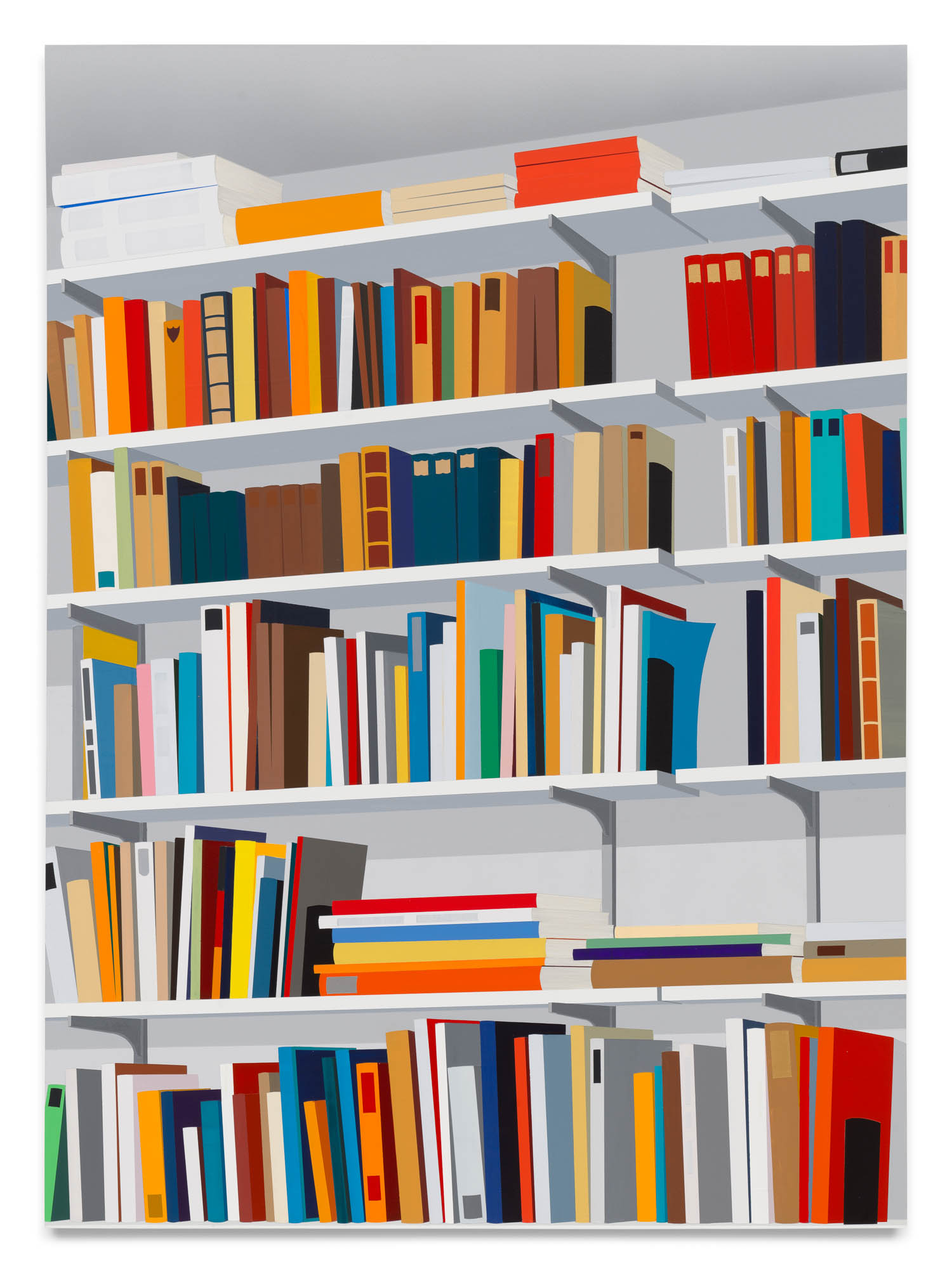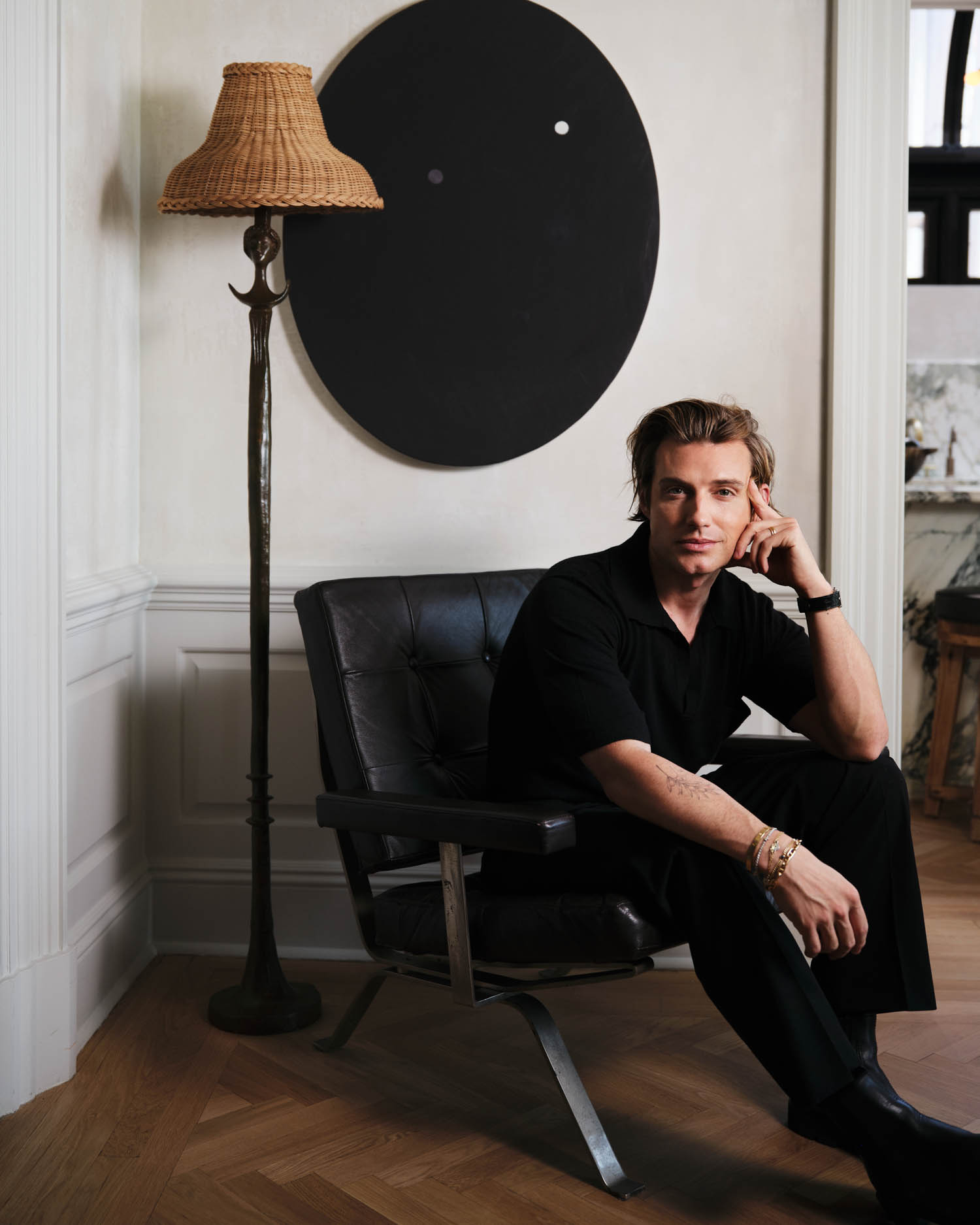Pierre Bonnefille Is a Masterful Alchemist of Art and Design
 A man of many talents, Pierre Bonnefille is an artist, a decorative painter, and a furniture designer. He studied cabinetmaking at the École Boulle and interiors at the École Nationale Supérieure des Arts Décoratifs, both in Paris. Collaborating with Olivier Gagnère on the Café Marly at the Musée du Louvre first brought widespread attention to Bonnefille, and he’s now best known as a contributor to environments for luxury brands including Cartier, Hermès, and Liaigre. In addition, he co-founded a paint company, Argile. He recently unveiled the Meditation Room, where the walls and ceiling consist of his large Bronze Paintings. Versions of the installation have traveled to London, New York, Los Angeles, and are now back in France during Les Rencontres d’Arles.
A man of many talents, Pierre Bonnefille is an artist, a decorative painter, and a furniture designer. He studied cabinetmaking at the École Boulle and interiors at the École Nationale Supérieure des Arts Décoratifs, both in Paris. Collaborating with Olivier Gagnère on the Café Marly at the Musée du Louvre first brought widespread attention to Bonnefille, and he’s now best known as a contributor to environments for luxury brands including Cartier, Hermès, and Liaigre. In addition, he co-founded a paint company, Argile. He recently unveiled the Meditation Room, where the walls and ceiling consist of his large Bronze Paintings. Versions of the installation have traveled to London, New York, Los Angeles, and are now back in France during Les Rencontres d’Arles.
Interior Design: Why the fascination with materials and textures?
Pierre Bonnefille: Materials have always been my principal inspiration. I look at a material, analyze it, and transform it to create a painting, a mural, a piece of furniture. For me, materials and textures are what brings color to life.
ID: Could you describe your primary materials?
PB: They are pigments mixed with sand, rock or metal powder, binders, and water-based solvents. I may combine bronze powder or carbon with a varnish. I also work with silver, gold, and moon-gold leaf.
ID: You have a collection of insects. Why?
PB: What interests me is the great complexity of their shells. Some absorb light, while others reflect it, giving rise to incredible lusters and sheens. I have about 100 small beetles, which I’ve either brought back from Thailand or bought at the taxidermy store Deyrolle. I’m fascinated by their durability. Even beetle shells found in Egyptian tombs have retained their colors.

ID: You’ve often talked about the importance of travel.
PB: The past 10 years, it’s largely been Asia. More recently, I bought back stones and sand from the desert in Namibia and created a watercolor series that depicts their colors and forms.
ID: You’ve also mentioned Venice and Japan.
PB: In Venice, I love the way colors have stood the test of time and how the presence of water is inscribed on the walls. There are wavelike motifs from the lagoon and other patterns created by rain. In Kyoto, Japan, I visited a garden with 120 species of moss. Some spread several thousand square feet per year. Others take centuries to cover a surface the size of a table. The broad palette of greens has been an immense source of inspiration for me.
ID: How does your creative process work?
PB: I like to develop one idea in terms of the materials or colors. For instance, at the château of a woman who has a passion for trees—she planted more than 2,000 Japanese maples with very rare bark—I worked with colors based on her arboretum. Each time you walk into a room, you discover a different tone.
Another memorable project was a Paris law office located in a mansion that formerly belonged to the Financière de Suez, and a large room there had previously been transformed into a museum in memory of Ferdinand de Lesseps, who built the Suez Canal. That history inspired my theme of water and reflections.

ID: You use a Japanese lacquer brush made with human hair. What about the rest of your tools?
PB: To reinvent materials, I need unconventional tools. I have palette knives that are nearly 10 feet wide, with slightly rounded blades for a more gentle effect.
ID: The starting point for your Metamorphosis furniture collection was African minerals.
PB: Yes. In an antiques store, I discovered a collection of copper minerals from western Africa, and the geometry of the crystals inspired me to create one-off and limited-edition pieces. The collection consists of chests, tables, credenzas, cabinets, and shelving.
ID: Have you used them for any projects?
PB: There are one-offs, similar to ones in the collection, at the boutique-atelier I’ve just completed in London for Maison Bonnet, which makes tortoiseshell eyeglasses. Each level is tiny, only about 200 square feet. The atelier is in the basement, the boutique on the ground level, and up above is a space for eye tests, a VIP salon, and a stockroom.
Glasses are displayed in cabinets that were originally in the British Museum. They are made from Cuban mahogany, which I’ve transformed with pigments and tulle. Integrating elements of London’s heritage is my way of honoring Bonnet’s arrival in the capital.

ID: What’s your focus at the moment?
PB: My Bronze Paintings. I work on “open” canvases, which have holes in them.
ID: And the paintings compose your Meditation Room.
PB: For those paintings, I incorporated moon-gold leaf as well as bronze powder. Depending on the light source, the sensation is very different. Light from a bulb creates a silvery atmosphere, whereas candles produce a firelike glow. It’s my way to conjure up abstract landscapes and to evoke the primary vibrations of the universe.


